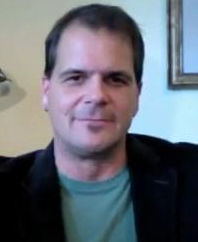Listening Prayer
by Brad Jersak
 We are often asked about the biblical basis for listening prayer. This is largely what Can You Hear Me? by Brad Jersak, attempts to share. Reading that book in its entirety will give readers a fuller sense of the biblical, historical and practical foundations for listening prayer.
We are often asked about the biblical basis for listening prayer. This is largely what Can You Hear Me? by Brad Jersak, attempts to share. Reading that book in its entirety will give readers a fuller sense of the biblical, historical and practical foundations for listening prayer.First, while I absolutely believe there is a biblical basis and New Covenant expectation for listening prayer, the Bible itself never demands a biblical template for every kind of ministry God calls us to. Further, in our experience with Christian skeptics, those who demand a biblical proof text seldom satisfied in any case.Having said that, I would point those who are open to what the Bible says about listening prayer in these directions:
1. Check out the many biblical promises that God will speak to us. Note those texts that describe conversation with God, especially where they are embedded within the New Covenant promises. i.e. What has been provided for every believer because of Jesus’ death, resurrection, ascension and the outpouring of his Spirit. E.g. Jer. 33:1-3, John 10:1-5; John 16:12-16; Rev. 3:20. These passages and scores of others suggest, model and even command us to listen to God’s voice and converse with Him.
2. Second, check out the many passages promising and commanding us to see God with the eyes of our heart. The Bible actually treats ‘beholding the Lord’ as a primary means of transformation (2 Cor. 3:16-4:6). I often start with a word study of the terms ‘Behold’ and ‘Lo,’ words which most often mean, ‘Gaze, on purpose and with love, using the eyes of your heart’ and especially ‘at the Lord Jesus.’ Again, beholding the glory of God in the face of Jesus is an invitation and prescription found in John 14, John 16 (the words ‘see’), Eph. 1 (eyes of the heart), Heb. 12:1-2 (fix your eyes on), or Col. 3:1-3 (set your ‘minds’ on). In Rev. 3:18ff, we are commanded to ‘get eye salve so you can see,’ and then immediately beckoned to ‘Behold, I stand at the door and knock.’ In Rev. 4:1-2, John obeys, ‘So I looked, and there was a door…’ where he is invited to ‘behold the throne and the one sitting on it.’
3. Once the Bible convinces us that we are to hear and see the Lord with the eyes and ears of our hearts, the question is ‘where?’ In our hearts. Within our hearts, we have the privilege of prayer life marked by an ongoing interactive meeting with the Lord Jesus. Our hearts are a context or venue where we can commune with God. We see many examples of this in the Bible: Often, writers welcome us to come before God on his throne, in our hearts: Dan. 7, Col. 3, Eph 1, Heb. 12 and Rev. 3 … All of these describe the throne room of God as a meeting place with him, but the encounter is happening within our hearts or minds. Other passages describe us ‘seeing’ the Lord at the Cross (esp. Zech. 12, and also Heb. 12).
King David’s interaction with God through Listening Prayer
In Psalm 23, this type of in-heart interaction is exactly what David does: He meets with the Good Shepherd in contemplative, listening prayer through various contexts: green pastures, quiet waters, paths of righteousness, valley of the shadow of death, banquet table, and the house of the Lord. We can copy David’s practice by visiting all of the places he describes, but also, we can do better than that: we can emulate David’s practice and live it by establishing our own heart-places. God reveals places within that are familiar and safe for us, in the same way David experienced them, but tailor-made from our own lives.
Listening Prayer helping heal emotional and spiritual hurts
4. So now we’re hearing and seeing the Lord in a context of our hearts. Question: would he also want to be Lord of the places in my heart that are damaged … the memories where I store pain, shame, anger, etc. I.e., What does MY ‘valley of the shadow of death’ look like? When Jesus says, ‘Lo, I am with you always,’ we learn this: a. ‘Lo’ means look with the eyes of your heart; b. ‘Always’ means ‘always has been and always will be’; c. ‘Always’ includes my painful past; d. I amcommanded to ‘Lo’ (look for) Jesus in those places. How? By asking, ‘Where were you? Would you show me? What do I need to know there? What do you want to do there?’
5. What is the biblical basis for the what, the why and the how of God’s healing work in our painful pasts and hurting memories? I typically look to such messianic passages as Isaiah 53 (forgiveness of sin and removal of sorrow), Isaiah 61 (lifting burdens and giving gifts in their place), speaking truth to our lies (Jesus said, ‘the truth will set you free’ in John 8:32), and freeing from every kind of bondage (Isaiah 58:6-7). In this last passage and in Luke 4:18-21, we see this as the ministry of Jesus and later hear him commission us: ‘As the Father sent me, so I send you’ (John 20:21).
6. I would also add that even without any of the above, we still have the John 14-16 Last Supper promises where Jesus is very clear about the ministry of Christ’s disciples (including us): the Holy Spirit would counsel us, guide us, speak to us, and lead us into all truth. Although I am thankful for God’s written word, Jesus’ promises in the New Covenant never mention the Bible’s guidance or instruction. It is Jesus’ guidance through the ministry and voice of the Spirit to the Church. The Bible says a lot about inner healing ministry, but that is not where we learned it. The Holy Spirit showed us as we stepped out and followed the living Jesus into it. How do we know that it was the Holy Spirit? Jesus again gives us a biblical basis for knowing:
Listening Prayer – Look for the fruits
7. We know by the fruits that come from listening prayer ministry (John 7:16-21). I would look to this and other texts where we are told to judge ministries by their fruit. As listening prayer is practiced, are people being healed and delivered and transformed? Are they listening more attentively to Christ and growing in character, obedience, faith and love for God. If so, then it is a work of God. This has been our very consistent experience over the last couple of decades, such that we believe God has called us to both do and to share and to train others in this ministry. For more on Listening Prayer see Brad’s YouTube Videos use the link below:


Copyright
Lynda Chalmers


